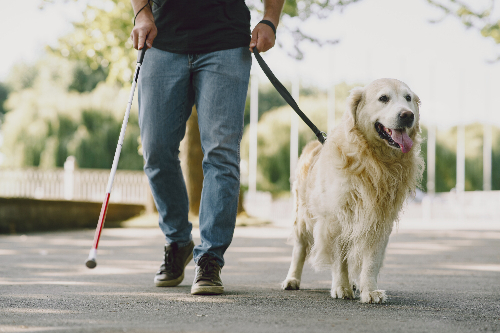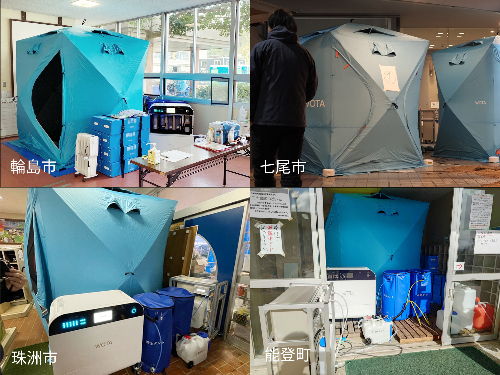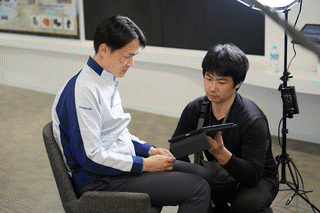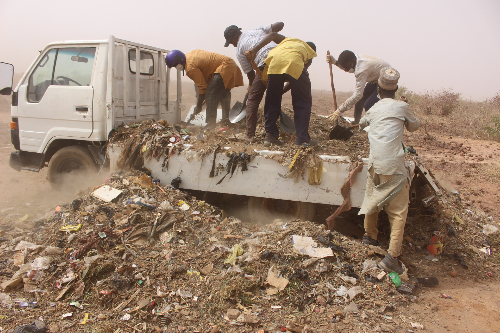JStories ー In southern Japan, researchers from the Prefectural University of Kumamoto and the National Institute of Technology, Kumamoto College, have developed a compact spherical robot designed to work in areas of rice paddies that conventional machinery cannot reach. The prototype – nicknamed “Ball Duck”– is part of an effort to create simple, low-cost tools that ease some of the most labor-intensive tasks in rice cultivation and help farmers maintain landscapes increasingly at risk of abandonment.
At the foot of Mount Aso, an active volcano in Kumamoto Prefecture ー a place known for its picturesque terraced paddies ー the latest version of the robot rolls through waterlogged fields, clawing up clusters of weeds embedded in the mud. This was the scene in May, when the research consortium conducted a field test aimed at easing one of rice farmers’ heaviest burdens.

Depopulation, an aging workforce, and a shrinking pipeline of successors are placing intense pressure on rice growers. Weeding ー often done in sweltering summer heat ー remains backbreaking work, prompting more farmers to give up cultivation altogether. Terraced paddies, carved into steep slopes and broken into small, irregular plots, are especially challenging: They are said to require twice the labor for half the yield compared with flatland fields, driving a serious abandonment problem.
Weeds such as barnyard grass can significantly reduce rice growth and yields. Yet for small terraces, using medium or large weeding machines is dangerous, if not impossible. A lightweight, autonomous robot that can remove weeds without human labor could not only reduce physical strain and improve safety but also help sustain rice cultivation in these fragile landscapes.
Portable, low-cost, and designed for small paddies
Current weeding methods range from hand labor and mechanical tools to the traditional Japanese “aigamo" method, in which farmers raise hybrid ducks that eat young weeds and insects while stirring up nutrient-rich mud. More recently, robots that churn mud to cloud the water and suppress weed growth have begun to appear.
The new spherical robot under development in Kumamoto takes a different approach: It uproots weeds. Light, inexpensive, and easy to use, it is suited to the small, irregular parcels typical of terraced paddies. The device measures roughly 26 centimeters in diameter, weighs about 4 kilograms, and is expected to be priced around 10,000 yen per unit. Equipped with wireless charging, it runs for about six hours after a three-hour charge.
Inside the sphere, internal wheels generate propulsion. Its weeding power comes from the round nodules that stud the outer shell ー designed to evoke the shape of the Aso caldera, one of Japan's largest volcanic basins.
These protrusions churn mud and pull out weeds, and can be customized by weed species or soil type. In August, the consortium secured a patent covering the shell's structure, materials, and weeding mechanisms.


A water depth of about 10 cm is needed for effective operation, typically starting about one week after rice planting. As it rolls, the robot scrapes mud and dredges up weeds such as barnyard grass and monochoria. According to professor Naotaka Matsuzoe, who leads the project, “The robot’s movement has no adverse effect on rice growth or yields.”
Strides toward robots that can navigate terrace steps
Because the robot is autonomous, it can be left in the field without human supervision. In addition to supporting organic rice cultivation by reducing chemical herbicide use, it is far cheaper than deploying large machinery ー easing the economic burden on farmers.
“Japan has set a goal of increasing organic farming acreage to 25% (1 million hectares) by 2050,” Matsuzoe notes. “That means physical methods that reduce pesticide use are being reevaluated. Farmers need to understand the specific conditions of their paddies: when weeds appear, where, and what kinds.”


“We’re still in the verification stage,” Matsuzoe adds. “By using a robot control system with short-range wireless beacons, we hope to improve autonomous motion within an invisible boundary and aim for real-world deployment in three to five years. Ultimately, we want a robot that can follow water flow and independently cross the tiered steps of terraced paddies.”
The consortium is also developing a chestnut-harvesting and transport robot as part of its push toward smart agriculture. During trials in August, the device reduced labor during harvest by 65%. After further improvements, a manually operated version with electric assist is planned for release in August 2026.

Strong interest at Osaka-Kansai Expo ー and potential in Southeast Asia
When the spherical weeding robot was exhibited at the Osaka-Kansai Expo in June 2025, it drew significant public interest. “The struggle to maintain terraced paddies isn’t unique to Japan,” says Matsuzoe. “Many Southeast Asian countries cultivate rice in similar terrain, and some areas remain untouched. I hope Japan can share its advanced agricultural technologies with its neighbors.”

“Protecting agriculture in mountainous and hilly areas ー not just growing rice ー supports groundwater conservation and sustains diverse aquatic ecosystems. With climate change bringing heavier rains and more frequent flooding, flatland farmland alone won’t secure our food supply. To ensure long-term food stability, we must urgently build sustainable agriculture that preserves terraced paddies in these regions.”
Translated by Anita De Michele | JStories
Edited by Mark Goldsmith
Top photo: Photo courtesy of the Prefectural University of Kumamoto
For inquiries regarding this article, please contact jstories@pacificbridge.jp
***
Click here for the Japanese version of the article





![[Podcast] Japanese technology to supercharge human fertility (Part 2)](https://storage.googleapis.com/jstories-cms.appspot.com/images/1765863548035unnamed-7_bigthumbnail.jpg)
![[Podcast] Japanese technology to supercharge human fertility (Part 1)](https://storage.googleapis.com/jstories-cms.appspot.com/images/1765440905082unnamed_bigthumbnail.jpg)
_bigthumbnail.jpeg)



![[Interview: Part 1] From nourishing souls to feeding the hungry](https://storage.googleapis.com/jstories-cms.appspot.com/images/1763695595492unnamed_bigthumbnail.jpg)



![[Interview] When digital and physical worlds meet](https://storage.googleapis.com/jstories-cms.appspot.com/images/1747974430456unnamed-2_smallthumbnail.png)




_smallthumbnail.jpeg)

![[Interview: Part 1] From nourishing souls to feeding the hungry](https://storage.googleapis.com/jstories-cms.appspot.com/images/1763695595492unnamed_smallthumbnail.jpg)

